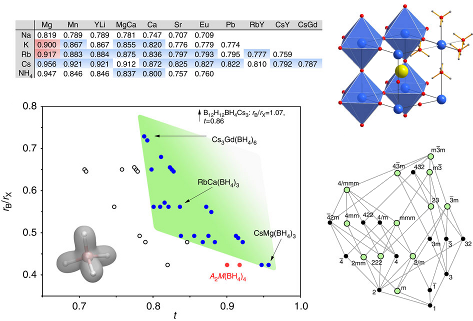-
Di-hydrogen contact induced lattice instabilities and structural dynamics in complex hydride perovskites
P. Schouwink, H. Hagemann, J.P. Embs, V. D'Anna and R. Cerný
Journal of Physics: Condensed Matter, 27 (26) (2015), p265403


DOI:10.1088/0953-8984/27/26/265403 | unige:73236 | Abstract | Article HTML | Article PDF | Supporting Info

The structural phase transitions occurring in a series of perovskite-type complex hydrides based on the tetrahydroborate anion BH4- are investigated by means of in situ synchrotron x-ray powder diffraction, vibrational spectroscopy, thermal methods and ab initio calculations in the solid state. Structural dynamics of the BH4 anion are followed with quasi-elastic neutron scattering. We show that unexpected temperature-induced lattice instabilities in perovskite-type ACa(BH4)3 (A = K, Rb, Cs) have their origin in close hydridic di-hydrogen contacts. The rich lattice dynamics lead to coupling between internal B-H vibrations and phonons, resulting in distortions in the high-temperature polymorph that are identical in symmetry to well-known instabilities in oxide perovskites, generally condensing at lower temperatures. It is found that anion-substitution BH4- â X- (X = Halide) can relax distortions in ACa(BH4)3 by eliminating coulomb repulsive H- â¢Â â¢Â â¢Â H- effects. The interesting nature of phase transition in ACa(BH4)3 enters an unexplored field of weak interactions in ceramic-like host lattices and is the principal motivation for this study. Close di-hydrogen contacts suggest new concepts to tailor crystal symmetries in complex hydride perovskites in the future.


